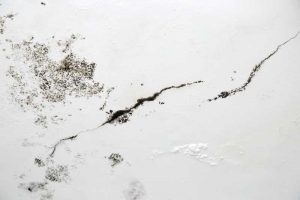 By David Muise and Gord Rajewski
By David Muise and Gord Rajewski
The term “mold” refers to a large group of microorganisms which grow on organic material and reproduce through the formation and spread of spores. These spores germinate within a few days of finding the right combination of surface, moisture, and temperature, and can form new spores to produce the next generation of growth within five to 10 days.
Mold growth in buildings can occur when mold spores, which are always present in buildings, are exposed to wet or humid conditions for a sufficient length of time and on an appropriate surface to support growth. Water sources can include plumbing leaks, spills, foundation seepage, roof or wall leaks, and condensation on cool surfaces such as inside ductwork and on windowsills, etc. In the presence of wet or highly humid conditions, mold spores can germinate within 48 to 72 hours (about three days).
Health risks and effects
Exposure to airborne mold can have varying effects on building occupants, depending on their individual sensitivities. Those who are affected may have an increased risk for respiratory symptoms, asthma, and respiratory infections in some individuals. Some common symptoms associated with exposure may include runny nose and congestion, eye irritation, coughing, and headache to name a few.
There are no set exposure limits for indoor airborne spore concentrations. Currently, the Environmental Protection Agency (EPA) does not have standards or threshold limit values (TLVs) for airborne concentrations of mold or mold spores. For example, in Canada, Health Canada considers mold growth/exposure to pose a health risk. The specific health risk is dependent on multiple factors, including the health of the building occupant(s), allergic sensitivities, degree of exposure, and the combination of mold species identified. As a result of this uncertainty and variability in human response, the derivation of exposure limits is difficult and therefore has not been completed.
Health impacts are more broadly related to the presence or absence of dampness and mold growth, but not to a specific spore concentration or type of mold. Further, a combination of level of exposure, individual sensitivity, and extent and location of the mold are all factors which may impact risk.
Virtually, all guidelines reviewed indicate all mold can be harmful, so if discovered indoors, it should be eliminated. Some of the guidelines reviewed included the 2001 Health Canada document, “Construction-related Nosocomial Infections in Patients in Health Care Facilities,” the CSA Standard Z317.13.17, Infection control during construction, renovation, and maintenance of health care facilities, the document “Mould guidelines for the Canadian construction industry” by the Canadian Construction Association (CCA), and the Institute of Inspection, Cleaning and Restoration Certification (IICRC)’s ANSI/IICRC S500 Standard and Reference Guide for Professional Water Damage Restoration to name a few.
Among other things, each of these standards have in common very specific procedures to follow when cleaning or remediating mold from a building. These remediation procedures are typically in three levels, from low to high, with the distinguishing difference in each being the surface area and the identified mold covers. As an example of that, the CCA’s mold guideline has Levels 1, 2, and 3. Specifically Level 1 (small) would be < 0.9 m2 (10 sf), Level 2 (intermediate) is between 0.9 and 9.2 m2 (10 and 100 sf), and Level 3 (large) is > 9.2 m2 (100 sf).




